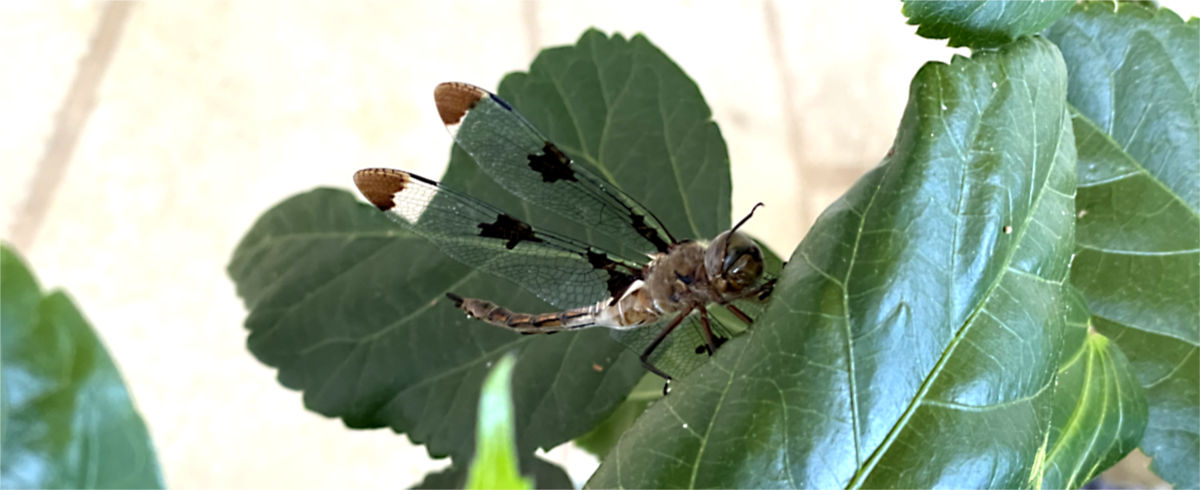If you’re interested in the insect world, here’s part 1 which focuses on some of our local invertebrates.
Insects and bugs (Ed. Aren’t they the same thing? Me. See, you don’t know *everything*. Check this out.) can be interesting, in their own crawly, occasionally creepy way, but the real action comes when you add a spine to the mix. And I’m not referring to cacti.
But first…take a look at the lime tree that Debbie is growing:
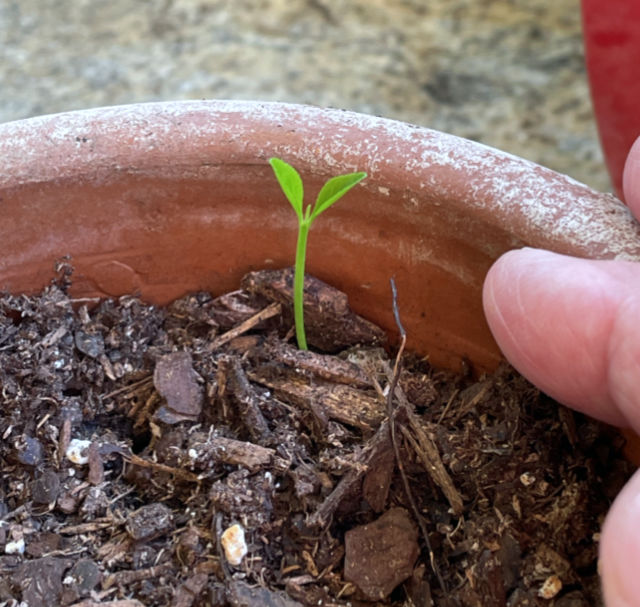
Our pals who live on South Padre Island sent us some exquisite limes from their tree, and Debbie has planted a few seeds. This seedling is the only one to germinate so far. This photo is a week old, and the tiny treelet has now almost doubled in size. Pretty cool, huh?
Breaking News: A second lime tree has just appeared!
Now, on to the actual subject of this post.

Almost everyone in the USA lives in whitetail deer country. The almost ubiquitous ungulate is native to every state in the Union except Alaska, Hawaii, California, Oregon, Nevada, and New Mexico. But Texas has by far the biggest population in the country, and sometimes I think our city has the most in the state.
This is the time of year when whitetail fawns begin to appear. A week or so ago, Debbie and I started out on an early morning bike ride, and we passed this doe resting placidly in a neighbor’s yard.
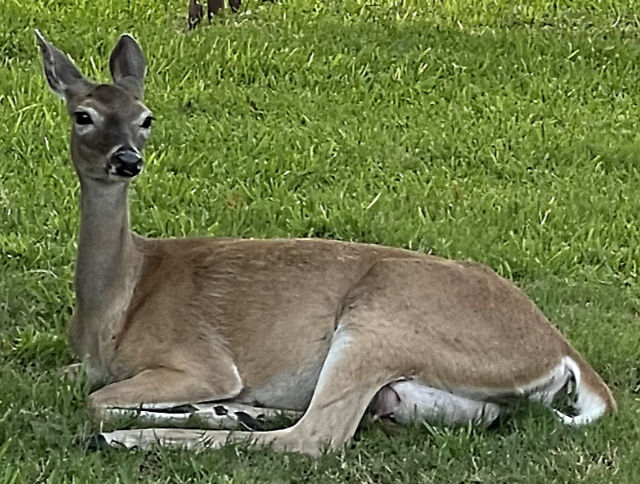
I’m not an expert in such matters, but a close examination of this photo seems to indicate that she was in the advanced stages of pregnancy and a birth was imminent. We didn’t want to upset her, so we cycled on, and when we returned about an hour later, she was nowhere to be seen.
This morning, as we once again started to cycle out of the neighborhood before it got too hot, we came upon the following scene, about a block away from where the preceding photo was taken.
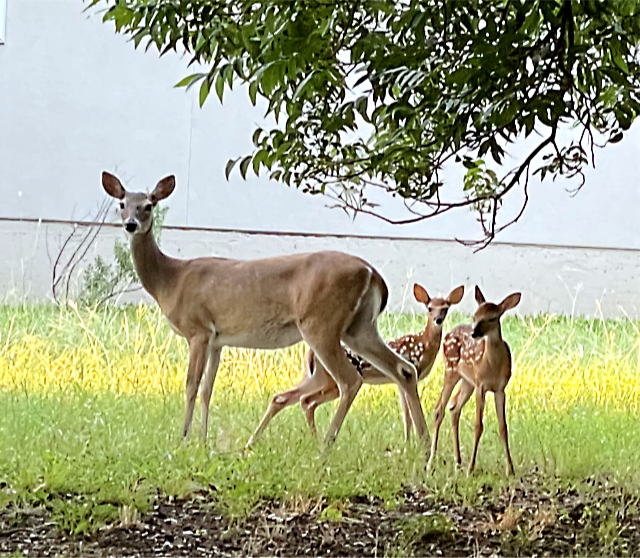
Is it the same doe? Could be; the coloring around the face certainly looks very similar (but it’s pretty typical of most whitetails). In any event, it was so neat to see the twin fawns doing well, and to contemplate the possibility that we had seen the mom just before she gave birth to them.

It appears that danger lurks in every corner of our yard, at least if you’re a lizard or a turtle. We have at least two lizards who have recently lost their tails, presumably to an unsuccessful attack by a predator.
We’ve nicknamed this Texas spiny lizard “Stubby” (or sometimes “Stumpy”; it’s hard to keep track). His tail should be about ten times the length that it currently is, and he’s pretty sensitive to how it looks.
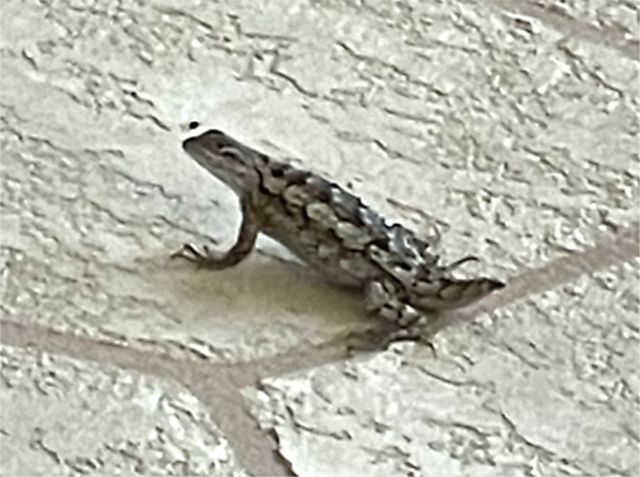
Then there’s this Carolina anole, which Debbie photographed a few days ago. I wasn’t sure if the black part of its tail meant it was coming or going, but the reptile ID group on Facebook assures us that it’s a sign of regeneration.

The lizards got off easy. Life is tougher for unhatched turtles. The females climb up from the creek in late spring and head to vacant lots and lawns to dig their nests and lay clutches of eggs. It’s almost impossible for mere humans to find a turtle nest without having seen the construction, because the females are amazingly adept at obscuring all visual clues.
What they can’t do is obscure the olfactory clues that often lead predators (e.g. skunks, possums, raccoons, armadillos, foxes, etc.) directly to the nests, wherein they feast on the eggs. Exhibit A:
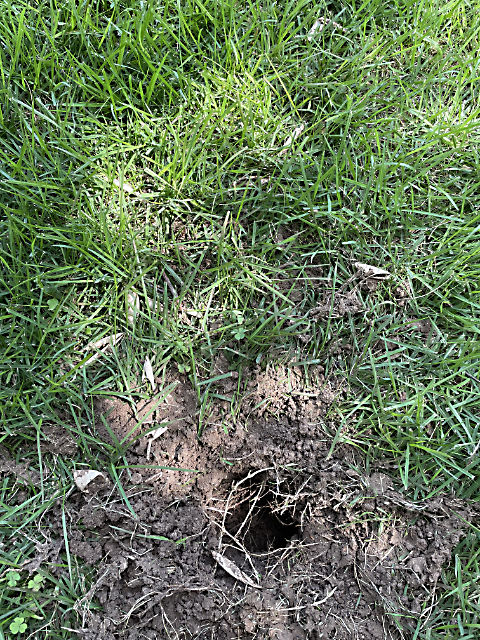
Debbie discovered this hole in our front lawn and initially thought it was the result of an armadillo digging for grubs or worms. I noticed the white slivers surrounding the hole and knew that this was the sad aftermath of a raided turtle’s nest. I counted the remains of at least a dozen eggs.
[Oh, for those who might be skeptical that the culprit could have been an armadillo, four years ago my trail camera caught one in that very act.]

I mentioned that skunks could raid nests like this…they’re frequent visitors in our neighborhood, so much so that we can recognize individuals by their coloration. Here’s one that’s hard to miss:
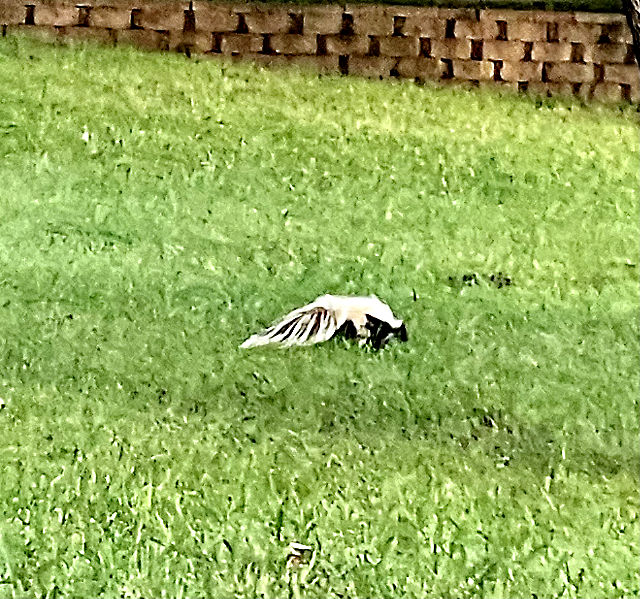
This is obviously not an albino, but I’ve never seen a skunk with this much white hair (nor has anyone else I’ve shared this photo with).
The skunk in the following photo climbed through the bars on the gate to our front courtyard, made a sharp right turn as if on a mission, then backtracked with the same apparent sense of purpose and headed into our front yard, where a deer stood watching both it and me (mostly me; I don’t think either species regards the other as a threat). This skunk is a common visitor, recognizable by a long light-colored hair at the very end of its tail.
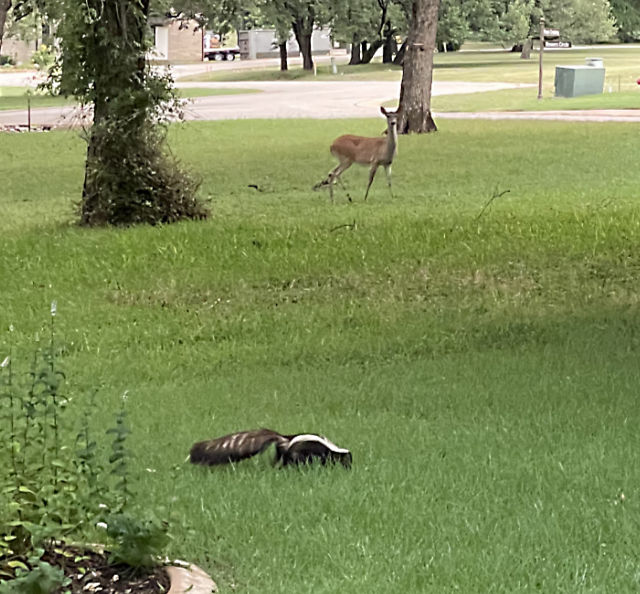

This next sighting might be a surprise to everyone who lives in Texas, but not because of the critter. It’s a cottontail rabbit, and there are approximately eighty billion of them in Texas. What makes it a surprise is that in the seven years we’ve lived here, we’ve seen only four (4!) rabbits. You would think that this area would be tailor-made for rabbit populations, wouldn’t you? I don’t know if there are enough coyotes, hawks, owls, and other predators to keep the population in check, or if there’s something else at work, but sighting a rabbit is a rare thing for us. All of our sightings have been a few miles from our house, on the somewhat wilder south side of Horseshoe Bay. There were actually two of them on the morning that we took the following photo during a bike ride, but by the time I got my camera out, only one was in view.

Two bunnies together might be the start of something big(ger).


We’ll close this edition of Neighborhood Nature with a snake sighting.
Debbie and I walked down to the low water crossing around dusk last week in the hope of sighting a snake. (Yeah, we’re weird that way.) And sure enough, a rather long one was lying on the pavement. I could tell even from a distance that it wasn’t dangerous, but needed to get closer to confirm the exact identity. It was having none of that, however, and swiftly slithered into the rocks on the bank of the creek.
I followed it and found that it was still exposed enough to identify it, although I wasn’t quick enough to get a picture of its head before it disappeared completely into the rocks.
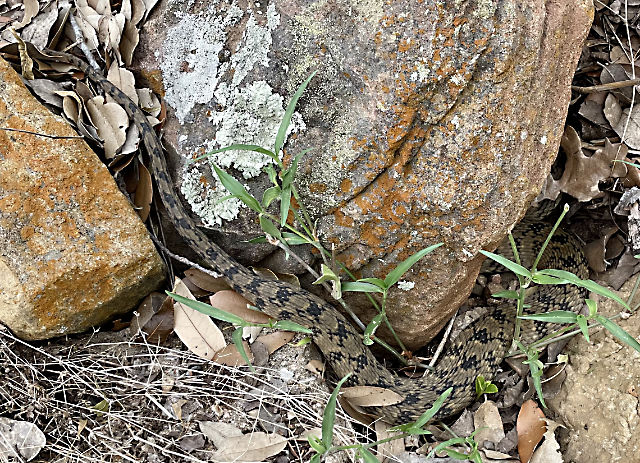
This is a non-venomous diamondback water snake (Nerodia rhombifer), eater of fish and frogs. This is only the second one we’ve seen in the neighborhood, and both have been sighted within the past two months (the first is documented at the bottom of this post).
Discover more from The Fire Ant Gazette
Subscribe to get the latest posts sent to your email.

